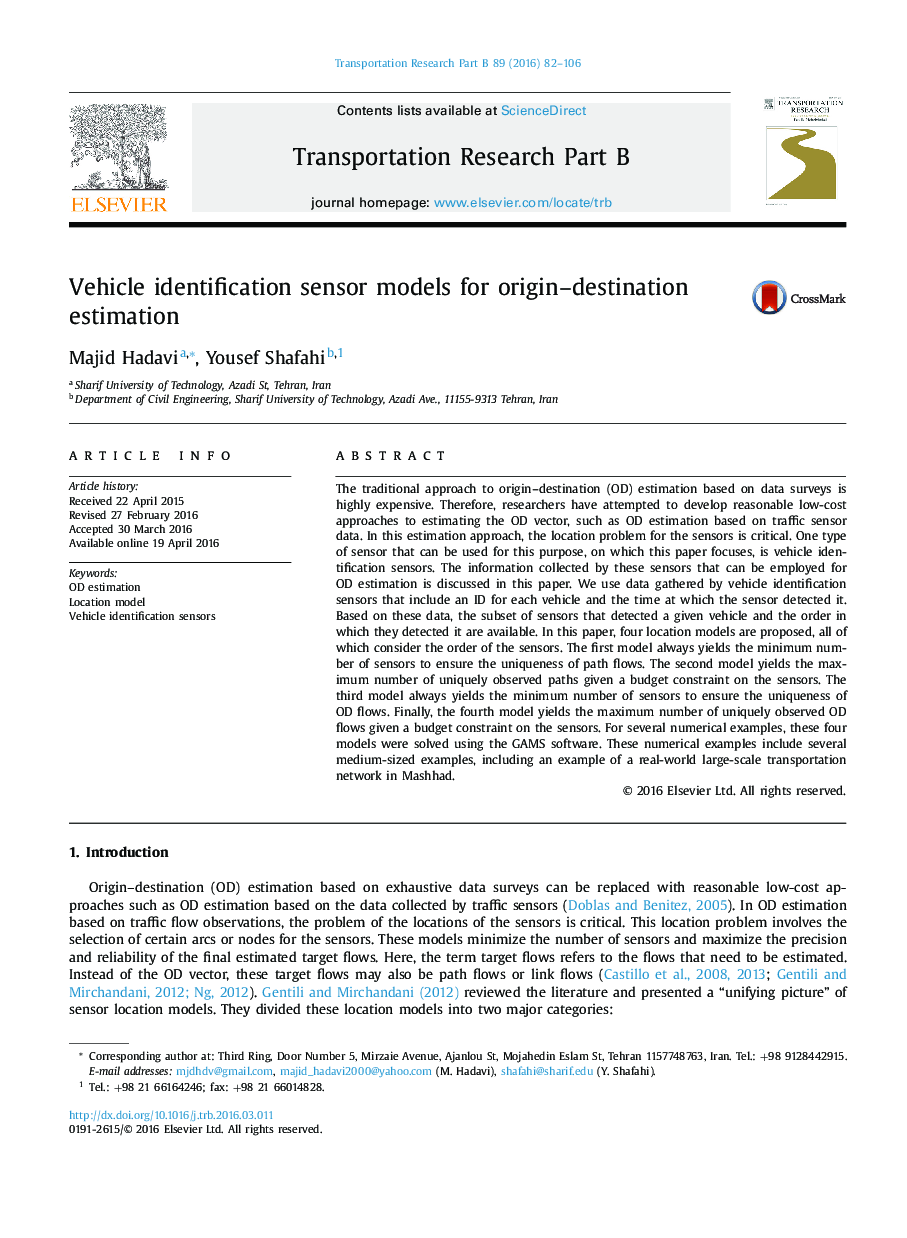| کد مقاله | کد نشریه | سال انتشار | مقاله انگلیسی | نسخه تمام متن |
|---|---|---|---|---|
| 1131622 | 1488955 | 2016 | 25 صفحه PDF | دانلود رایگان |
• We proposed four new location models for vehicle ID sensors.
• We are first in considering the availability of order of sensors in location models.
• Considering the order can produce better results in the final OD flow estimation.
• We proved our location models always yields the optimum answer.
• These models are solved for an example of a real large-scale transportation network.
The traditional approach to origin–destination (OD) estimation based on data surveys is highly expensive. Therefore, researchers have attempted to develop reasonable low-cost approaches to estimating the OD vector, such as OD estimation based on traffic sensor data. In this estimation approach, the location problem for the sensors is critical. One type of sensor that can be used for this purpose, on which this paper focuses, is vehicle identification sensors. The information collected by these sensors that can be employed for OD estimation is discussed in this paper. We use data gathered by vehicle identification sensors that include an ID for each vehicle and the time at which the sensor detected it. Based on these data, the subset of sensors that detected a given vehicle and the order in which they detected it are available. In this paper, four location models are proposed, all of which consider the order of the sensors. The first model always yields the minimum number of sensors to ensure the uniqueness of path flows. The second model yields the maximum number of uniquely observed paths given a budget constraint on the sensors. The third model always yields the minimum number of sensors to ensure the uniqueness of OD flows. Finally, the fourth model yields the maximum number of uniquely observed OD flows given a budget constraint on the sensors. For several numerical examples, these four models were solved using the GAMS software. These numerical examples include several medium-sized examples, including an example of a real-world large-scale transportation network in Mashhad.
Journal: Transportation Research Part B: Methodological - Volume 89, July 2016, Pages 82–106
